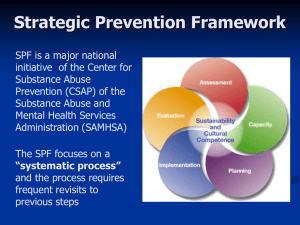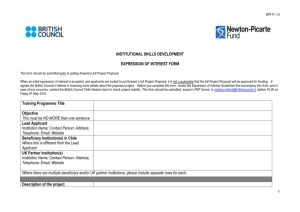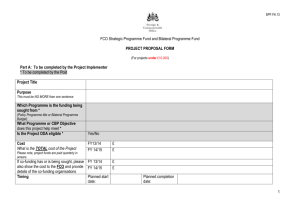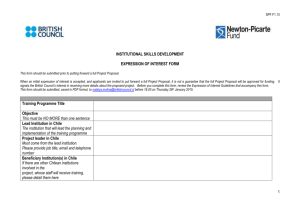7386 Care for laboratory animals in a specific pathogen free
advertisement
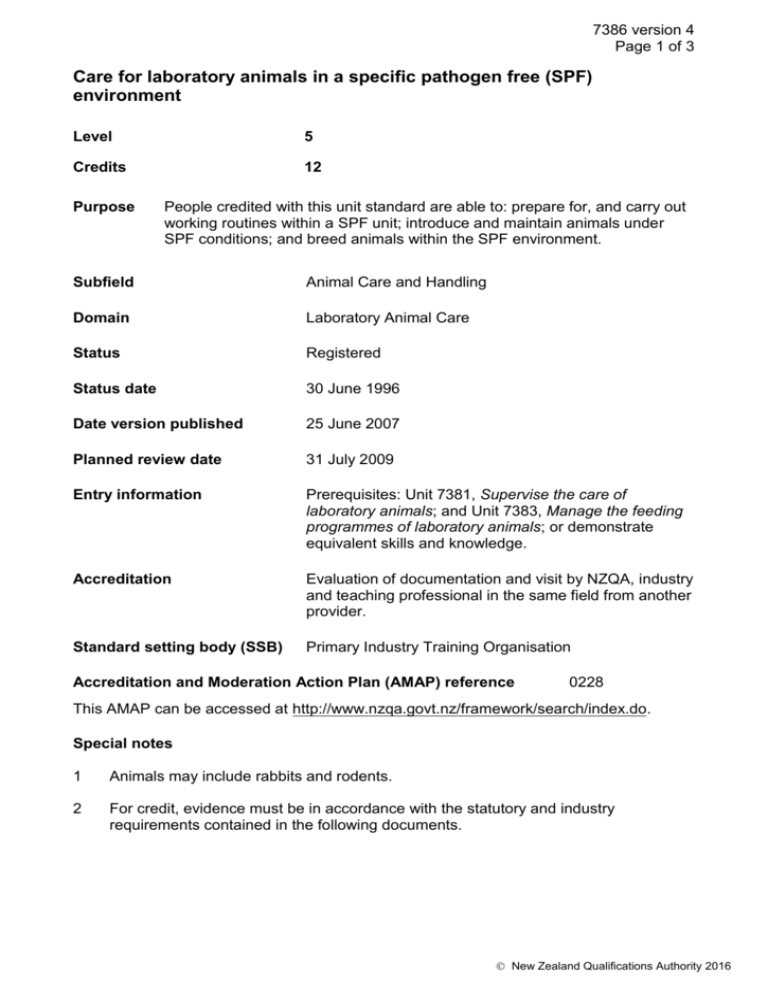
7386 version 4 Page 1 of 3 Care for laboratory animals in a specific pathogen free (SPF) environment Level 5 Credits 12 Purpose People credited with this unit standard are able to: prepare for, and carry out working routines within a SPF unit; introduce and maintain animals under SPF conditions; and breed animals within the SPF environment. Subfield Animal Care and Handling Domain Laboratory Animal Care Status Registered Status date 30 June 1996 Date version published 25 June 2007 Planned review date 31 July 2009 Entry information Prerequisites: Unit 7381, Supervise the care of laboratory animals; and Unit 7383, Manage the feeding programmes of laboratory animals; or demonstrate equivalent skills and knowledge. Accreditation Evaluation of documentation and visit by NZQA, industry and teaching professional in the same field from another provider. Standard setting body (SSB) Primary Industry Training Organisation Accreditation and Moderation Action Plan (AMAP) reference 0228 This AMAP can be accessed at http://www.nzqa.govt.nz/framework/search/index.do. Special notes 1 Animals may include rabbits and rodents. 2 For credit, evidence must be in accordance with the statutory and industry requirements contained in the following documents. New Zealand Qualifications Authority 2016 7386 version 4 Page 2 of 3 Relevant and current National Animal Welfare Advisory Committee (NAWAC) Codes of Welfare and Codes of Recommendations and Minimum Standards, National Animal Ethics Advisory Committee (NAEAC) Guides, and Good Practice Guide for the Use of Animals in Research, Testing and Teaching, NAEAC (September 2002), available at http://www.maf.govt.nz, under animal welfare. Animal Welfare Act 1999, Health and Safety in Employment Act 1992, and any subsequent amendments. 3 In-house procedures refer to the documented policies and procedures for animal handling and ethical behaviour codes required by the employer. 4 Underpinning Knowledge The following areas of knowledge underpin performance of the elements in this unit standard. Design requirements of a SPF unit; standard ecological classification (germ free, gnotobiotic, specific pathogen free, conventional); principles of SPF animal production, monitoring, frequency of testing; research significance of SPF animal production in terms of non experimental variables; current technology used to provide SPF barrier conditions (micro-isolator cages, laminar flow racks, flexible film isolators, barrier buildings); significance of caesarean derivation and embryo transfer, significance of technique as a management tool for disease control. Elements and performance criteria Element 1 Prepare for, and carry out working routines within a SPF unit. Performance criteria 1.1 Entry and exit procedures are carried out in accordance with in-house SPF unit requirements. 1.2 Wastes and animals are removed from the SPF unit in accordance with inhouse SPF unit requirements. 1.3 Clothing and equipment are treated for use in SPF rooms according to in-house SPF standards. 1.4 Animals are transported in a manner which avoids contamination during transit. Element 2 Introduce and maintain animals and equipment under SPF conditions. Performance criteria 2.1 Animals are introduced into the SPF unit avoiding contamination according to in-house procedures. Range caesarean derivation, embryo transfer, 'clean' stock. New Zealand Qualifications Authority 2016 7386 version 4 Page 3 of 3 2.2 Equipment is introduced into the SPF unit using appropriate sterilising technique, and according to type of equipment. Range equipment can include but is not limited to – bedding, cages, food. 2.3 Unit and equipment are monitored using test methods appropriate to situation and in-house procedures. 2.4 Animal health within the unit is monitored according to in-house procedures. Range 2.5 microbiological, genetic, serological, parasitological. Water is treated according to in-house procedures. Range hyperchlorination, acidification, filtration, sterilisation, ultraviolet irradiation. Element 3 Breed animals within the SPF environment. Performance criteria 3.1 Animal breeding is carried out according to demand, and with regard to maintenance of SPF conditions. 3.2 Problems associated with SPF animal production are described in terms of barrier integrity, sources of contamination, management of contamination, and control strategies for compromised barriers. Please note Providers must be accredited by NZQA, or an inter-institutional body with delegated authority for quality assurance, before they can report credits from assessment against unit standards or deliver courses of study leading to that assessment. Industry Training Organisations must be accredited by NZQA before they can register credits from assessment against unit standards. Accredited providers and Industry Training Organisations assessing against unit standards must engage with the moderation system that applies to those standards. Accreditation requirements and an outline of the moderation system that applies to this standard are outlined in the Accreditation and Moderation Action Plan (AMAP). The AMAP also includes useful information about special requirements for organisations wishing to develop education and training programmes, such as minimum qualifications for tutors and assessors, and special resource requirements. Comments on this unit standard Please contact the Primary Industry Training Organisation standards@primaryito.ac.nz if you wish to suggest changes to the content of this unit standard. New Zealand Qualifications Authority 2016
